Lets take an area I know - the Pevensey Levels in Sussex - click here if you would like to see a similar argument applied to the Wash .
and look at the Saxon place names which refer to islands these places are all derived from the Saxon word æg meaning an
island, which has been shown to refer to modern place names starting in eg, ending in ay or et or ey
or ly or ney or sea or sey or ye or is, or containing eye or island.
So lets take a look at modern Pevensey and see if we can make it into an island.
The following images are derived from Open Streetmap with the sea level overlays provided by Alex Tingle from http://flood.firetree.net, please note that you can click on each map below to show the flood.firetree map.
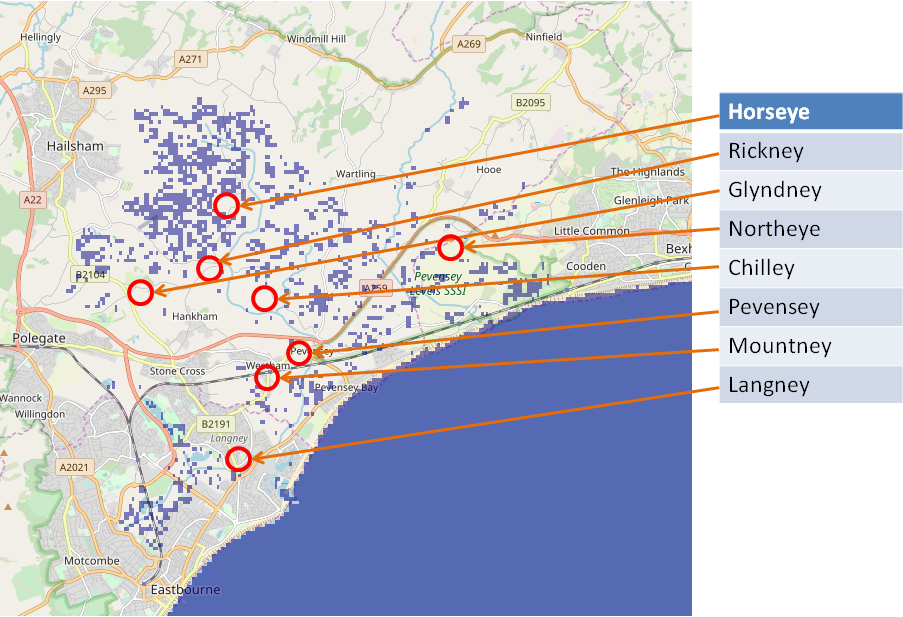
The map above shows the current sea level, as you can see very few of the locations whose name implies an island are actually islands, but the area near Horseye is at sea level.
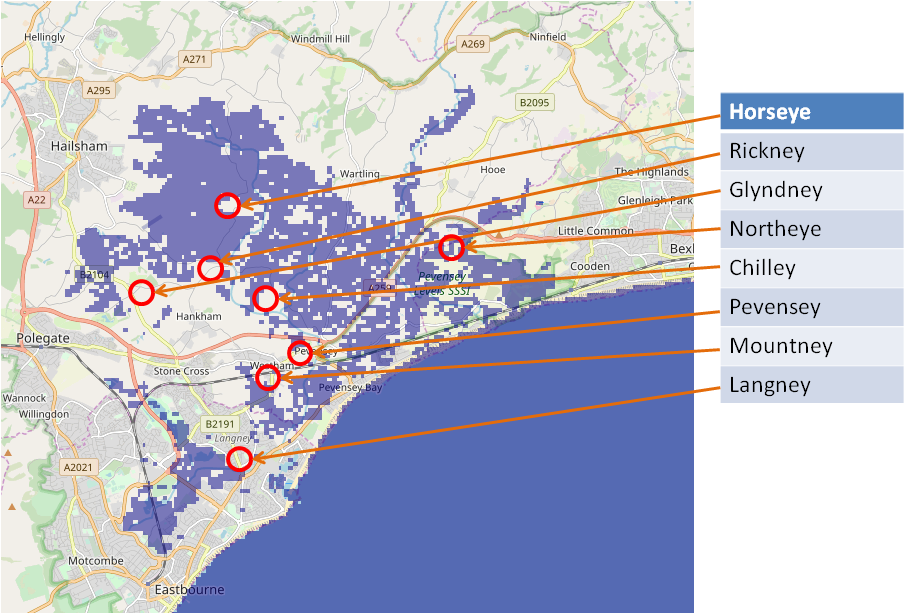
This map shows what the land would look like if the Sea Level rose by 1 metre, Pevensey is still land based.
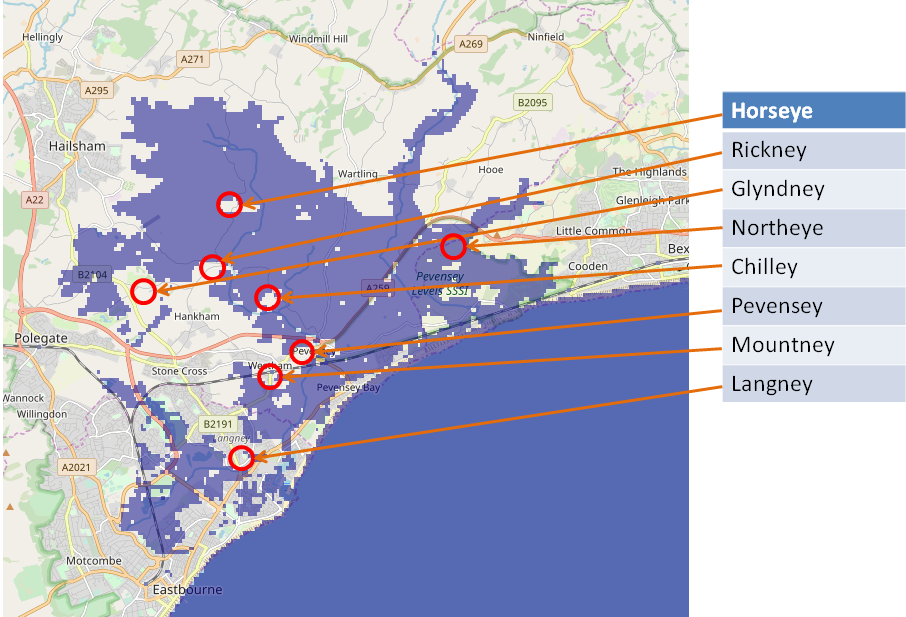
This map shows what the land would look like if the Sea Level rose by 2 metres, the area around Pevensey is starting to look more like an island.
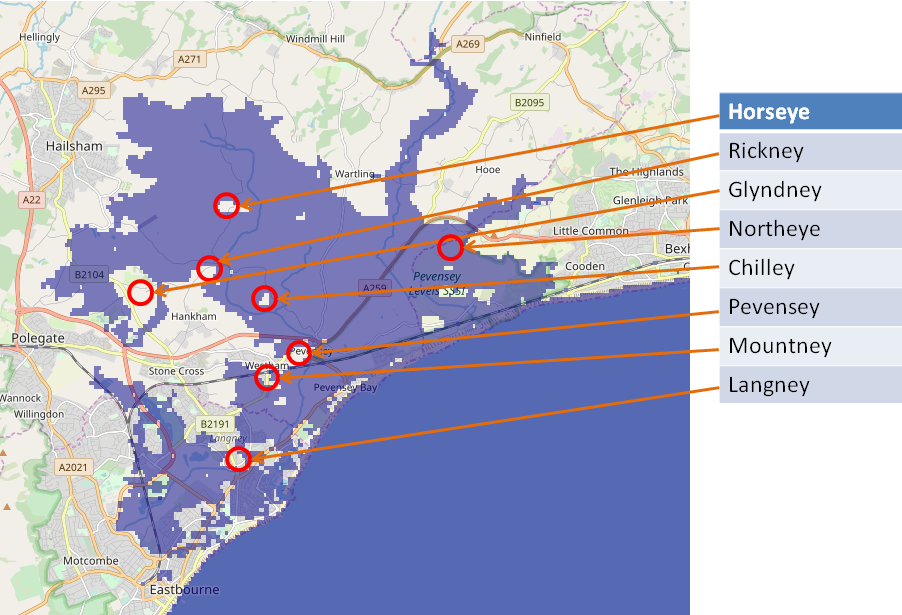
This map shows what the land would look like if the Sea Level rose by 3 metres, Pevensey is still not an island, but some of the others are.

This map shows what the land would look like if the Sea Level rose by 4 metres, this is much better but still the area near Pevensey
is still not there yet.
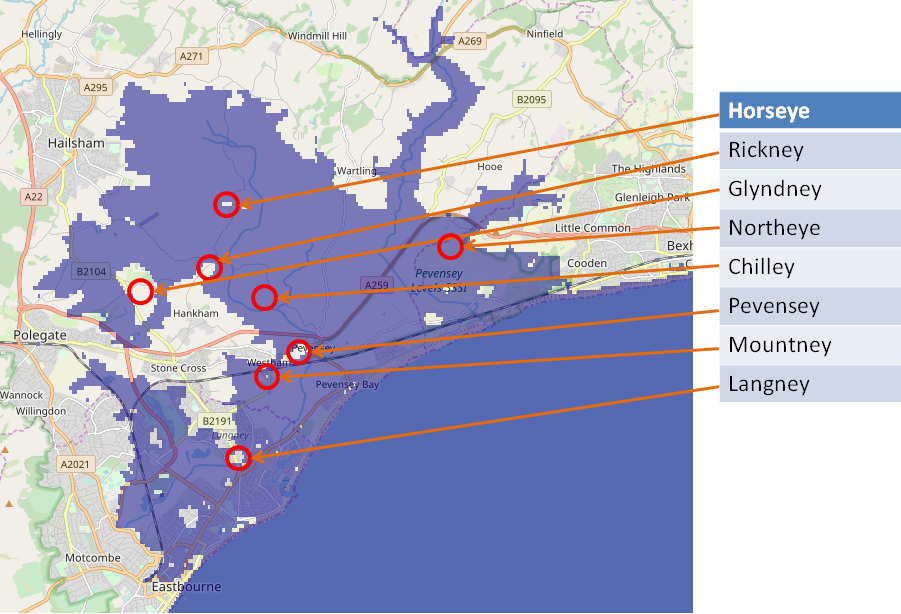
This map shows what the land would look like if the Sea Level rose by 5 metres, Pevensey and all the other locations now look
like islands, so this implies that the high tide level was at the 5 metre mark in early Saxon times when the villages were named.
So the logical conclusion is that the high tide level in early Saxon times was up to 5 metres higher
than today, or the modern sea defenses are blocking this rise. So the whole area around Sussex and Kent would have looked similar to the map shown below, please note we are not showing the land that has been eroded from the coastline, which in the case of Sussex could be a metre per year.
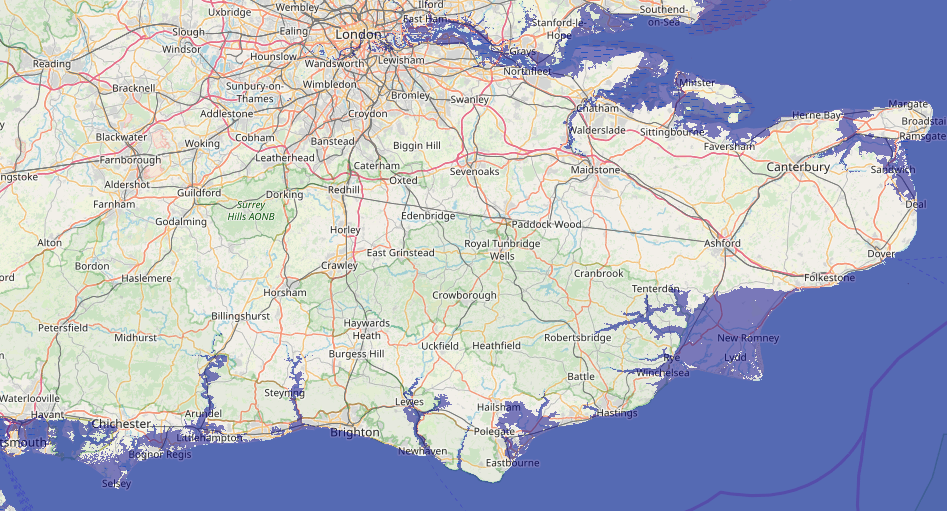
So the logical conclusion is that the high tide level was up to 5 metres higher
than today, or the modern sea defenses are blocking this rise.
I think this is a valid argument for a 5 metre sea level so we need to overlay all our maps with this and see what this shows, the
map above shows what effect this would have on the South East of England, with a number of rivers cutting deep into the land. As you can
see, most of the river valleys would have been accessible from the sea, the Romney and Pevensey Marsh areas together with the area
around Worthing were salt marshes.
|